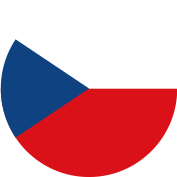When women have their period, hormonal changes can bring a lot of discomforts. Many women deal with cramps, mood swings, bloating, headaches, and feeling tired. It’s a tough time, and these symptoms can really interfere with daily life. However, what you eat during your period can make a big difference. The right foods can help balance hormones and ease some of these uncomfortable symptoms.
Eating certain nutrient-rich foods can give your body the support it needs to feel better during menstruation. From boosting energy to reducing bloating and even improving mood, small changes to your diet can help a lot. By focusing on what you eat, you can naturally balance your hormones and support your health during this challenging time of the month. Keep reading to find out which foods can help you feel better and make your period more manageable.
The Importance of Balanced Nutrition During Periods
During your period, your body goes through a lot of changes because of hormone shifts. These changes can lead to common symptoms like cramps, bloating, mood swings, and feeling extra tired. It’s frustrating, but balancing hormones through the right foods can help ease these problems.
Certain foods can naturally help your body balance hormones, reducing those uncomfortable symptoms. For example, foods rich in iron are important because you lose iron during your period, which can make you feel weak. Magnesium helps with cramps and mood swings, while omega-3s can reduce inflammation and even improve your mood.
10 Foods to Help Balance Hormones and Support Women’s Health
Eating the right foods during your period can make a big difference in how you feel. Here are 10 foods that can help balance hormones and support your health when you’re menstruating:
1. Ginger
Ginger is a powerful anti-inflammatory that can ease period cramps and bloating. Its natural compounds help relax muscles and reduce inflammation, which makes it great for relieving discomfort. Drinking ginger tea during your period can also help with nausea and improve digestion, which can be common issues. It’s a simple, natural way to feel better when those cramps hit.
2. Water-Rich Fruits (e.g., Watermelon, Cucumber)
Staying hydrated is essential during your period, and water-rich fruits like watermelon and cucumber help with that. These fruits keep you refreshed and hydrated, which is important because dehydration can make cramps and fatigue worse. Plus, their natural sweetness can help curb sugar cravings, which often lead to energy crashes and mood swings.
3. Turmeric
Turmeric is another natural anti-inflammatory that works wonders for period pain. This bright yellow spice is known for its ability to reduce inflammation, which can help ease cramps and bloating. Adding turmeric to your meals or sipping on turmeric tea during your period can promote overall wellness and keep you feeling balanced.
4. Flaxseed Oil
Flaxseed oil is rich in omega-3 fatty acids, which help reduce period cramps by lowering inflammation. It’s also good for digestion, helping to relieve constipation, which some women experience during menstruation. You can easily add flaxseed oil to smoothies, salads, or even take it as a supplement to give your body a boost during your period.
5. Fatty Fish (Salmon, Mackerel)
Fatty fish like salmon and mackerel are packed with omega-3s, which help reduce inflammation and improve mood. These healthy fats can reduce cramping and make you feel calmer during your period. Additionally, fatty fish are rich in iron, which helps replenish the iron lost during menstruation, preventing fatigue and boosting energy.
6. Quinoa
Quinoa is a superfood that’s perfect for menstruation because it’s high in iron and magnesium. Iron helps fight fatigue caused by blood loss, while magnesium reduces mood swings and cramping. Quinoa is also a gluten-free grain with a low glycemic index, meaning it won’t spike your blood sugar. This makes it a great option for women who experience cravings or blood sugar dips during their period.
7. Dark Chocolate
Dark chocolate, especially the kind with at least 70% cocoa, is rich in magnesium, which helps with cramps and mood swings. It’s also a great way to satisfy those chocolate cravings that often come with your period, without the sugar crash that milk chocolate can cause. Plus, dark chocolate is known to release endorphins, which can help improve your mood.
8. Leafy Green Vegetables (Spinach, Kale)
Leafy greens like spinach and kale are packed with iron, which is essential for replenishing what’s lost during menstruation. Low iron levels can lead to fatigue, so eating these greens can help you feel more energized. They’re also high in magnesium, which is great for reducing bloating and calming mood swings.
9. Lentils and Beans
Lentils and beans are full of iron and protein, both of which help keep your energy up during menstruation. They also promote digestive health, which can sometimes be a concern during your period. These nutrient-packed foods are low in calories but rich in fiber, making them great for keeping your blood sugar balanced and preventing the energy dips that come with cravings.
10. Nuts (Almonds, Walnuts)
Nuts, particularly almonds and walnuts, are loaded with omega-3 fatty acids and magnesium, both of which help reduce inflammation and calm headaches. They also make a healthy, satisfying snack to help curb cravings. Nuts are easy to add to your diet, whether as a snack or mixed into meals, and they give you a quick energy boost when you need it most.
Foods to Avoid During Menstruation
What you eat can either help or worsen your period symptoms, and certain foods are best left out during this time to maintain balance and comfort.
1. Salt – High salt intake leads to water retention and bloating, leaving you feeling heavier and more uncomfortable.
2. Sugar – Though tempting, sugar can cause energy spikes followed by crashes, leading to mood swings and low energy.
3. Caffeine – Caffeinated drinks like coffee can make bloating worse and often trigger headaches, which are already common during periods.
4. Alcohol – Alcohol is dehydrating, which can make fatigue and digestion issues more pronounced. It’s better to avoid it to stay hydrated and energized.
Simple Ways to Add These Foods to Your Daily Diet
Adding hormone-balancing foods to your daily routine is simple and can make a big difference. Start with easy snacks like a handful of nuts or a square of dark chocolate to curb cravings. You can also blend leafy greens into smoothies or enjoy a quinoa salad for lunch. For extra comfort, sip on turmeric or ginger tea to ease cramps and bloating. These small changes can help you feel better during your period and keep your hormones balanced. Just a few tweaks to your meals can go a long way in supporting your health.
Final Thoughts on Taking Care of Women’s Health with Nutrition
The foods you eat during your period can really help you feel better. Choosing hormone-balancing foods can ease symptoms like cramps, bloating, and mood swings, making your period a little easier to manage. Nutrition is a simple and effective way to support your body when it needs it most. Be mindful of what you eat—small changes can lead to big improvements. You can help balance hormones and feel better throughout your cycle with the right foods. Take care of yourself through what you eat!






































